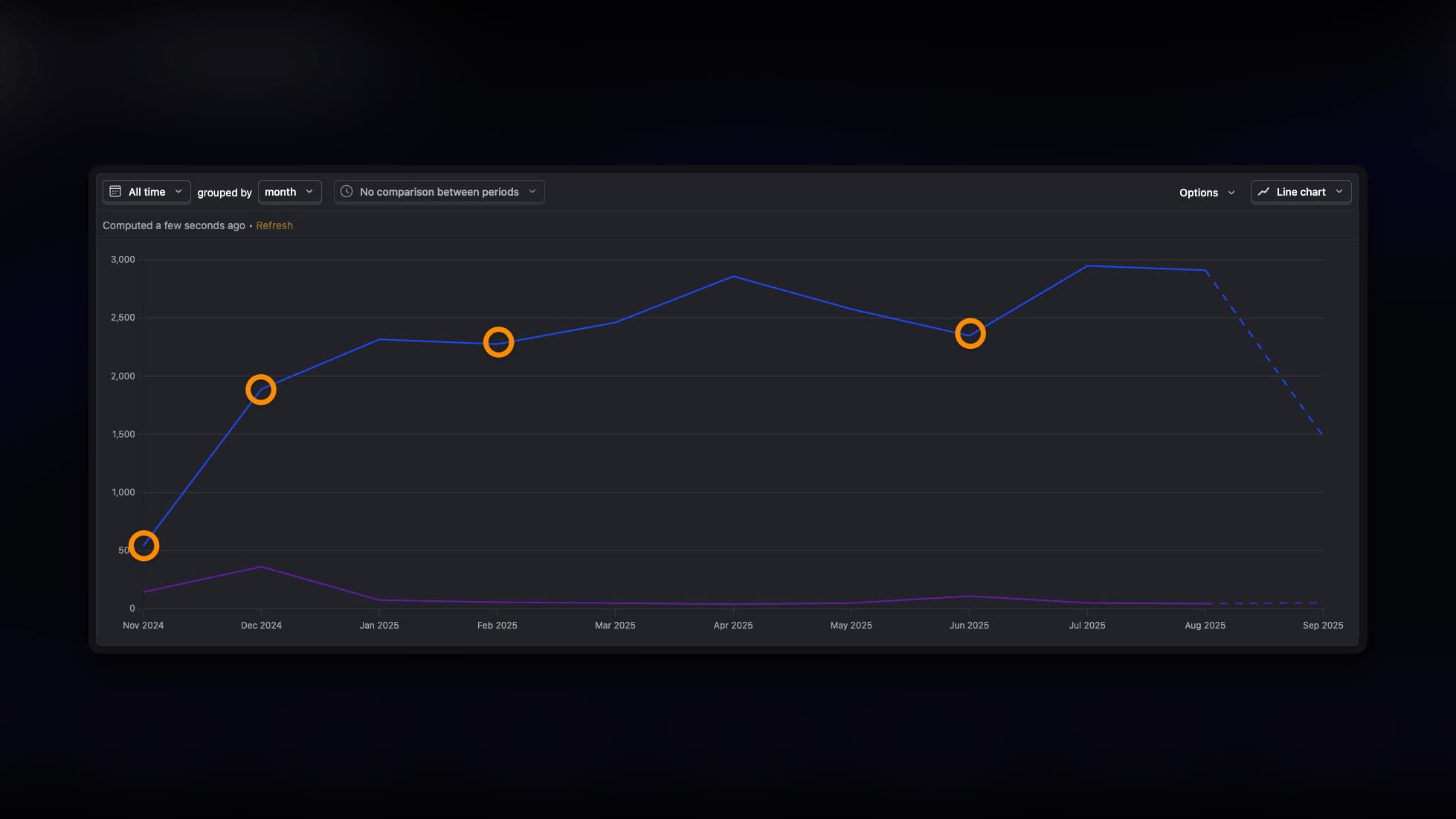In practice, teams typically avoid this growth loop because it lacks theatre. There’s no big launch, just steady compounding.
Yet if you commit to it for six weeks, you’ll usually see conversion lift, cheaper acquisition, and far less hand‑waving in meetings.

Why small beats grand
Small tests cap your downside and speed up learning. If a landing page headline loses, you lose a day, not a quarter. If a Google Ads tweak drops CAC, you know within a week and can scale it.
The biggest win, though, is focus: one change at a time gives you cleaner cause and effect.
The loop, in plain English
Each week, you choose one specific hypothesis, ship the smallest change that can validate it, measure with pre‑defined criteria, decide quickly, and move on. No drama. No wishful thinking. Just honest cycles.
A hypothesis might be as simple as:
If we put a clear proof point at the top of the landing page for cold traffic, more people will convert because we reduce uncertainty.
Notice it names the audience, the change, the metric, and the reason.
Then you ship the smallest version of that idea. Swap the hero copy to mirror the ad promise. Move one testimonial above the fold with a quantified result. Compress the hero image so the page loads instantly. That’s it. One lever. One hour of work. Resist the urge to do five other “while we’re here” edits. Protect the loop.
Before you hit publish, define what success looks like. “We’ll keep this if the landing page conversion rate improves by at least 10% after 500 sessions.” Or, “We’ll keep this Google Ads change if CAC drops by 15% without hurting sales‑accepted lead rate.” Clear thresholds stop arguments later.
Let the change run long enough to collect a fair sample. During that time, sanity‑check your instrumentation—are events deduped, internal traffic excluded, UTMs in place? Dirty data is the fastest way to trick yourself.
When the window closes, decide. If it wins clearly, promote it to your new control. If it’s directionally promising but inconclusive, tweak and run it back next week. If it loses, revert and write a five‑line note in your decision log: hypothesis, change, window, result, next action. Then pick the next bet.
What a week actually looks like
Monday morning, you pick your one change. Maybe your paid search terms show a mess of irrelevant queries. Your hypothesis: moving bottom‑funnel keywords into an exact‑match‑only campaign will cut CAC because you’ll filter noise.
You implement it in 45 minutes, add negatives to the old campaign, and define success: a 15% CAC drop at steady spend and no drop in sales‑accepted rates.
Tuesday, you ship a landing page tweak: replace the clever headline with the explicit offer, move three trust logos into the hero, and fix the chunky hero image. Success is a 10% lift in conversion rate after 500 sessions. You QA your tracking, confirm events are firing in real time, and step away.
By Thursday, you’re seeing early signals. You don’t call the result yet; novelty can fool you. Friday, you have enough data. The exact‑match campaign is already trimming wasted spend. The new headline is holding at a +14% lift on cold traffic. You keep both, write the two decision logs, and pick next week’s test.
It’s unspectacular. It works.
Start with the levers that usually move
If you’re unsure where to begin:
Fix the message‑match between your traffic and your page. Mirror the ad promise in the hero, add a single sentence that says who the offer is for, and put your strongest proof where it can’t be missed.
Reduce form friction—remove fields you don’t need yet, add inline validation, and enable autofill.
Check speed—compress the hero, defer non‑critical scripts, and aim for LCP under 2.5s and CLS under 0.1.
In paid search, separate branded from non‑branded and add obvious negatives from the last seven days.
In email, try a plain‑text note with one clear ask instead of a glossy newsletter.
On social, make one point per post and one ask.
These are the quiet, repeatable wins.
Avoid the traps
Aesthetics tempt us. Changing colours and shapes feels productive, but meaning moves numbers: proposition, proof, and friction.
Don’t declare victory after a day; set minimum samples and windows to avoid novelty bumps.
Keep your data clean or you’ll end up optimising a mirage. And don’t run ten tests at once against the same audience—you’ll blur causality.
The loop is only as good as your discipline.
The pay‑off after a month
Four to six cycles later, you’ve shipped a handful of changes, promoted one or two to “the way we do things now,” and killed a couple with minimal cost.
Typical outcomes:
Landing page conversion up 10-30% on cold traffic
CAC down 10–25% at steady spend
Fewer “we think” debates because the logs show what actually happened.
More importantly, your team now expects small weekly ships instead of heroic quarterly launches. That culture shift is the real moat.
Make it boring to make it win
Growth isn’t a roll of the dice. It’s a loop you can run on Tuesdays.
Choose a hypothesis.
Ship the smallest meaningful change.
Measure with rules you wrote before you saw the results.
Decide quickly.
Repeat.
Do that for six weeks and the compounding takes care of the headline wins that used to require a 20‑page plan.




